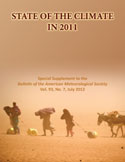 People send me stuff. Imagine my surprise when this morning’s mail included the text of a round robin email from Tom Harris — the Canadian PR man who heads the Heartland-funded denialist lobby group the International Climate Science Coalition [full text here]. It gives an interesting insight to how these groups work behind the scenes. Here’s Harris appealing for signatures to a letter to UN secretary general Ban Ki-Moon:
People send me stuff. Imagine my surprise when this morning’s mail included the text of a round robin email from Tom Harris — the Canadian PR man who heads the Heartland-funded denialist lobby group the International Climate Science Coalition [full text here]. It gives an interesting insight to how these groups work behind the scenes. Here’s Harris appealing for signatures to a letter to UN secretary general Ban Ki-Moon:
Time is short if we are to mount a significant counterpoint to the scientifically invalid assertions already being broadcast by the 1,500 journalists and 7,000 environmentalists attending the UN climate conference now underway in Qatar.
Please find below our “Open Letter to the Secretary-General of the United Nations” to which we are inviting your endorsement. We have 61 qualified endorsers as of 9 pm EST, about 19 hours after we started to ask people.
Because we have an agreement with a major media outlet to publish the open letter on Thursday, I will need to know of your support within the next day if possible, please.
The denialist spin machine in action. The usual suspects queuing to sign up to a letter that’s going to be published — where? My guess would be the Wall Street Journal. Even more interesting is the nonsense these luminaries are so keen to endorse…
Continue reading “Signing up to nonsense: denialists plot letter to UN secretary general”

 Amidst the scarcely believable frenzy of climate change denial which has taken hold in sectors of American politics, to say nothing of the equally scarcely believable silence from the White House, we need to be reminded that there are sane and steady political voices in that country, however difficult it is for them currently to gain a hearing. Representatives Edward Markey and Henry Waxman recently had the minority staffs of the Committee on Natural Resources and the Committee on Energy and Commerce prepare a report for them Going to Extremes: Climate Change and the Increasing Risk of Weather Disasters (pdf
Amidst the scarcely believable frenzy of climate change denial which has taken hold in sectors of American politics, to say nothing of the equally scarcely believable silence from the White House, we need to be reminded that there are sane and steady political voices in that country, however difficult it is for them currently to gain a hearing. Representatives Edward Markey and Henry Waxman recently had the minority staffs of the Committee on Natural Resources and the Committee on Energy and Commerce prepare a report for them Going to Extremes: Climate Change and the Increasing Risk of Weather Disasters (pdf 
 What makes this event significant, is the role Arctic sea ice plays as a reflector of solar energy. Ice is white and therefore reflects a large part of incoming sunlight back out to space. But where there is no ice, dark ocean water absorbs most of the sunlight and thus heats up. The less ice there is, the more the water heats up, melting more ice. This
What makes this event significant, is the role Arctic sea ice plays as a reflector of solar energy. Ice is white and therefore reflects a large part of incoming sunlight back out to space. But where there is no ice, dark ocean water absorbs most of the sunlight and thus heats up. The less ice there is, the more the water heats up, melting more ice. This  This year’s
This year’s